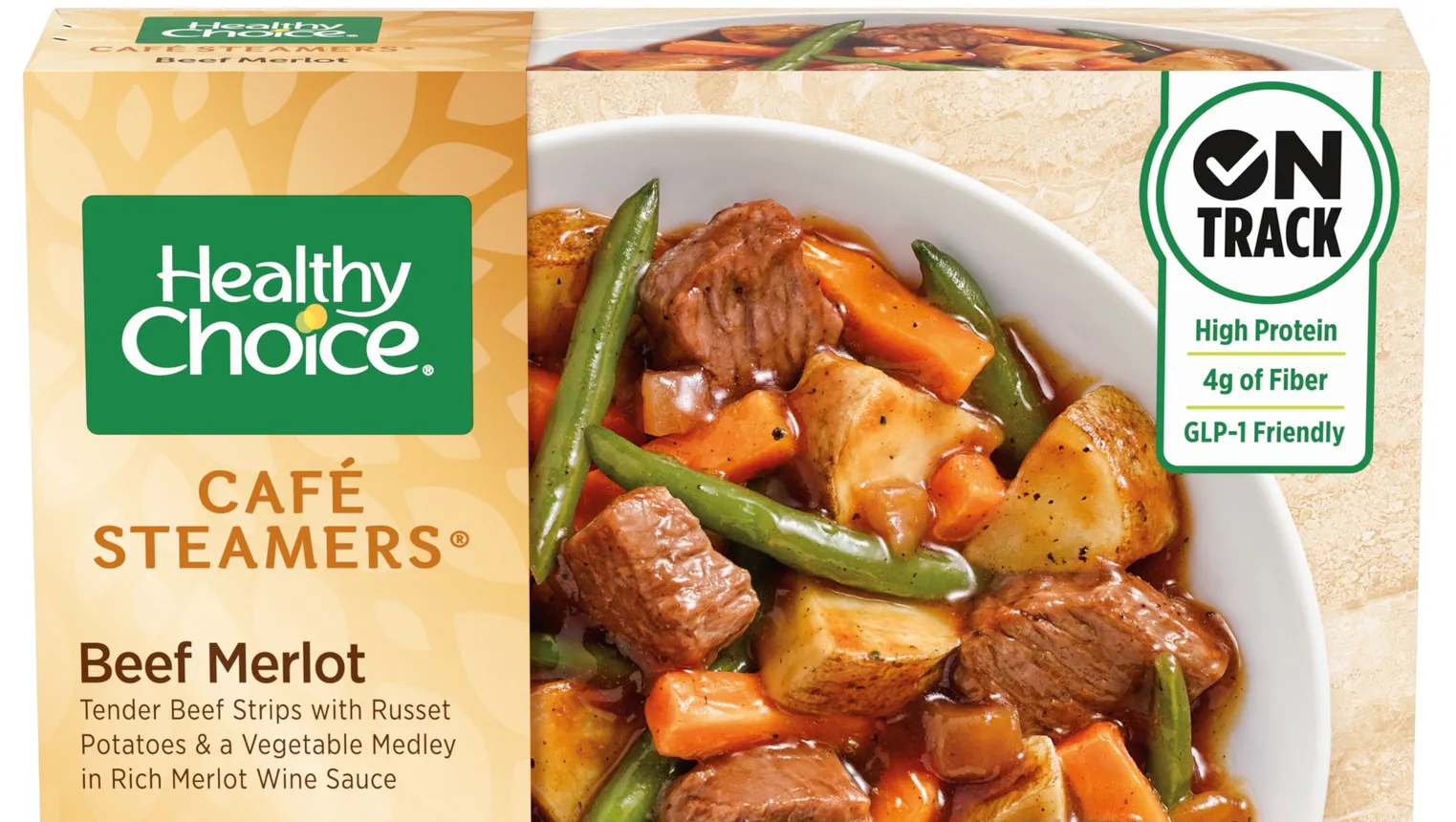The rising popularity of weight loss drugs like Ozempic and Wegovy is reshaping how consumers eat, and some food giants see an opportunity to benefit from the shift by promoting everything from their meat sticks and frozen meals to soups.
Roughly 14% of U.S. adults have taken GLP-1 drugs to lose weight or manage other diseases like diabetes. The medications, which suppress appetites, have created worries in the food industry that the rise in the popularity of these drugs could lead to a meaningful drop in food consumption and sales.
So far though, food manufacturers have largely withstood a drop in volume.
Executives say they’re armed with a portfolio of products loaded with protein, nutrients and other healthy attributes, responding to demand among those taking the medication.
Conagra Brands has added a label to more than two dozen of the company’s Healthy Choice offerings that indicate the frozen meals are “GLP-1 friendly,” making it the first major food brand to call out popular weight-loss medication on its packaging. The company is watching how consumers respond to the label and collecting feedback before it decides whether other brands could benefit from marketing or similar labels.
“That is an opportunity, absolutely, with the companies in our space,” Sean Connolly, CEO of Conagra Brands, told reporters at the annual Consumer Analyst Group of New York (CAGNY) conference in Florida. “It’s really a matter of helping people understand we’re here for you, and we’ve got a truckload of solutions to help you achieve your goals and stay on target.”
Connolly said many of Conagra’s products, including Birds Eye vegetables, protein-laden Slim Jim meat sticks and Healthy Choice frozen meals, are attractive to consumers using GLP-1 drugs for weight management.
Just as important, he said these foods continue to resonate even after people stop taking the medication because they are portion-controlled and contain nutrients needed to help consumers keep the weight off and stay healthy.
Conagra is far from alone in targeting GLP-1 users for new products.
“That is an opportunity, absolutely, with the companies in our space. It’s really a matter of helping people understand we’re here for you, and we’ve got a truckload of solutions to help you achieve your goals and stay on target.”

Sean Connolly
CEO of Conagra Brands
General Mills is using targeted advertisements this year to promote its Progresso high protein and fiber soups to GLP-1 users. Danone, the world’s largest yogurt maker, is partnering with healthcare practitioners, working with retailers and marketing Oikos, Too Good & Co and other offerings as a solution for people taking GLP-1 medications.
And Nestlé last year launched a pre-meal drink under its Boost brand to help consumers suppress their hunger and create a feeling of being full. It also rolled out its first major U.S. brand in nearly three decades called Vital Pursuit for consumers taking GLP-1 medications and other individuals focusing on weight management.
“Weight management is a big opportunity” for the world’s largest food manufacturer, Laurent Freixe, Nestlé’s CEO, told analysts at CAGNY.

Optional Caption
Permission granted by Conagra Brands
Should snack companies be worried?
A recent study from Cornell University and Numerator found households with at least one GLP-1 user cut their grocery spending by about 6% within six months of taking the medication. Savory snacks were hit particularly hard, with spending on products, such as chips, baked goods, sides and cookies, falling between 6.7% and 11.1%.
Hershey CEO Michele Buck said in November that the Kisses and Reese’s maker is seeing a “mild” effect from GLP-1.
But other indulgent treat manufacturers have seen negligible changes, with PepsiCo CEO Ramon Laguarta telling analysts last month the company hasn’t seen a “direct impact” from GLP-1 medications.
Mondelēz International CEO Dirk Van de Put said the Oreo and Cadbury maker recently worked with a leading consulting firm to assess how GLP-1s affect food consumption. They found consumers ate smaller portions while on the medication, but returned to their former consumption habits once they stopped using the drugs.
Van de Put said in an interview with Food Dive that GLP-1 drugs could cut into product volumes at Mondelēz by up to 1.5% by 2035. He said the snacking giant doesn’t need to make healthier products, but instead smaller portions that people can eat while taking the drug.
Mondelēz also is less immune to GLP-1s than its competitors because only a quarter of its business comes from the U.S., which is expected to be the largest market for the drugs targeting weight loss, he said.
“Of all the threats that we have to the business and the risks we have to deal with, it’s not one that I lie awake from at the moment,” Van de Put said. “It is a threat, don’t get me wrong, but it doesn’t feel at this stage we should be panicking about it. It’s manageable in my opinion.”
Brittany Quatrochi, an analyst with Edward Jones, said the push among shoppers toward healthier offerings, a cleaner ingredients profile and interest in functional nutrition have all proven to be more influential in forcing food companies to change how they market and innovate than GLP-1s.
“Overall, [weight-loss medications] likely haven’t had an impact on the broader food category. It might be an undercurrent, but we don’t see it as a major headline,” Quatrochi said. “We still haven’t seen any company come out and say, ‘This is really impacting our business, or really the big reason why volume growth is a struggle.’ ”
发表回复